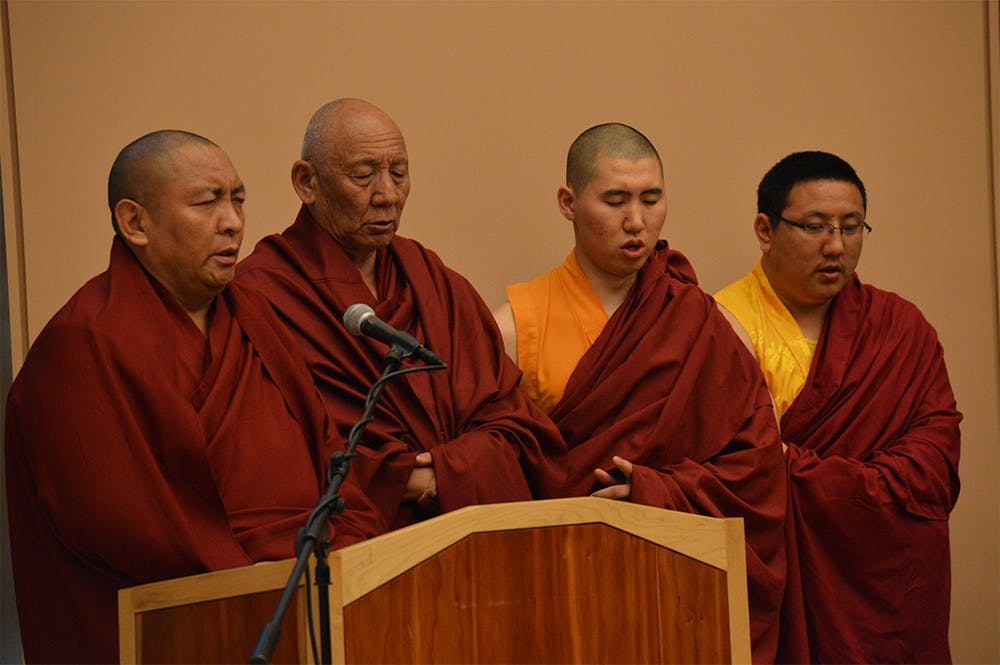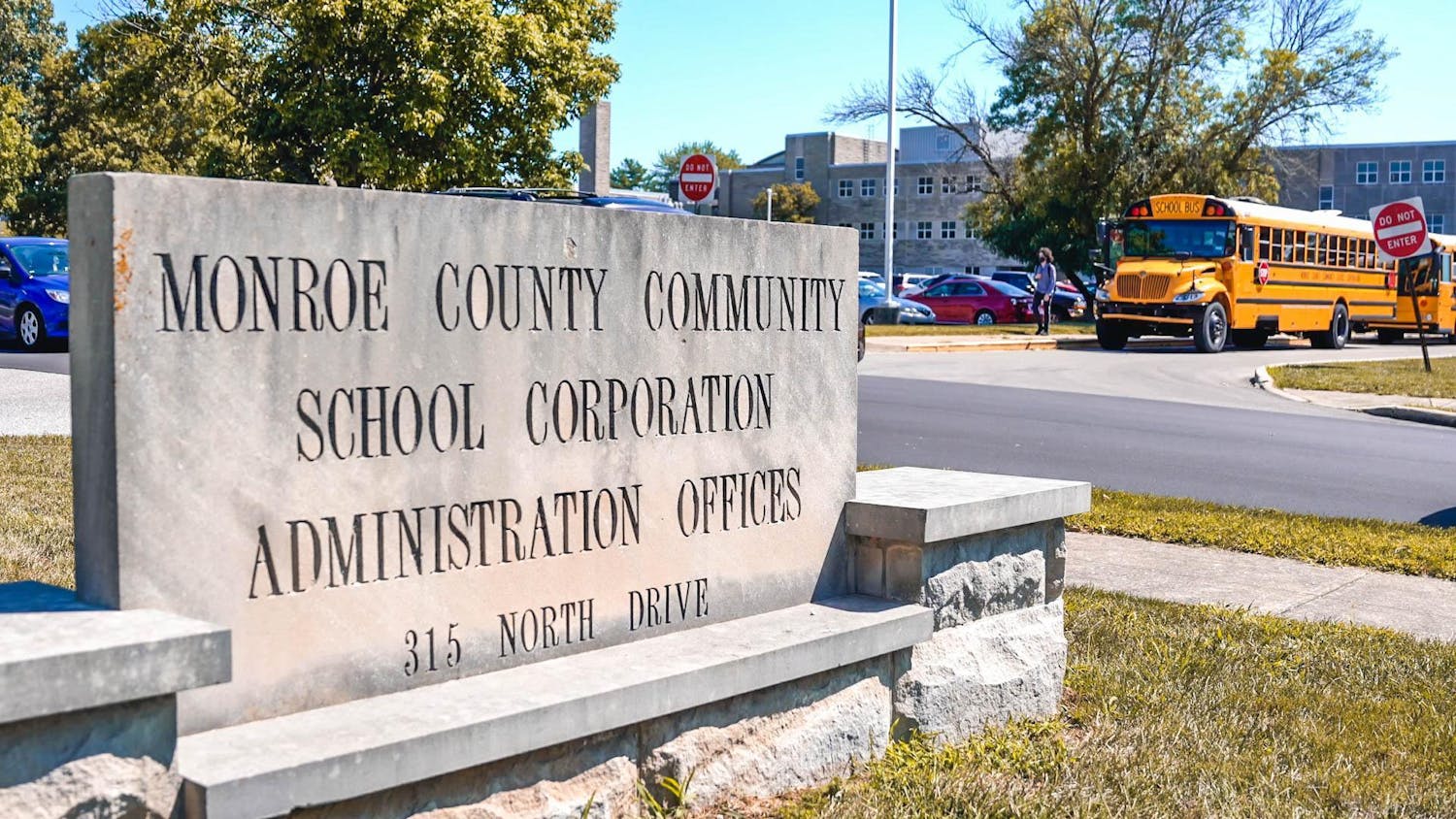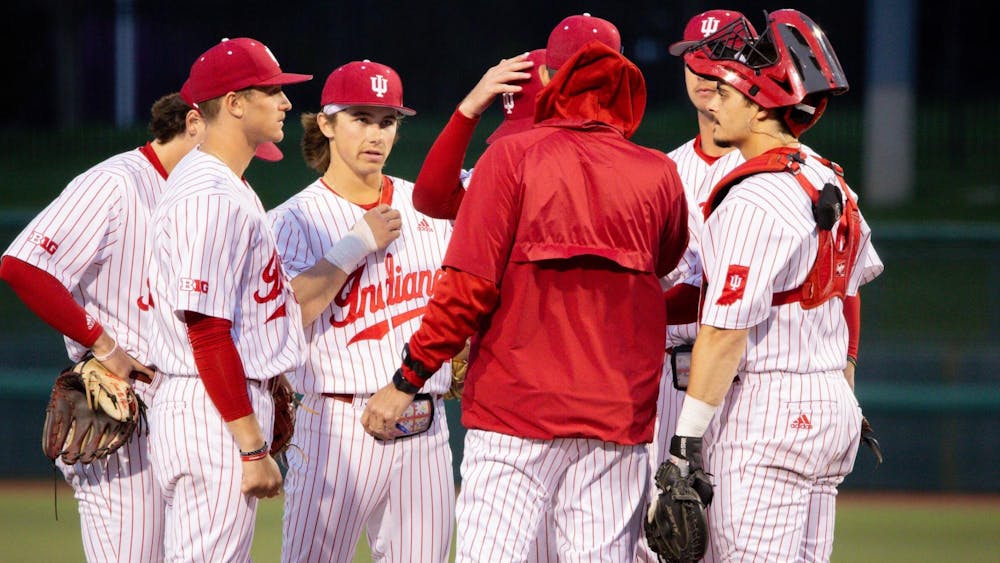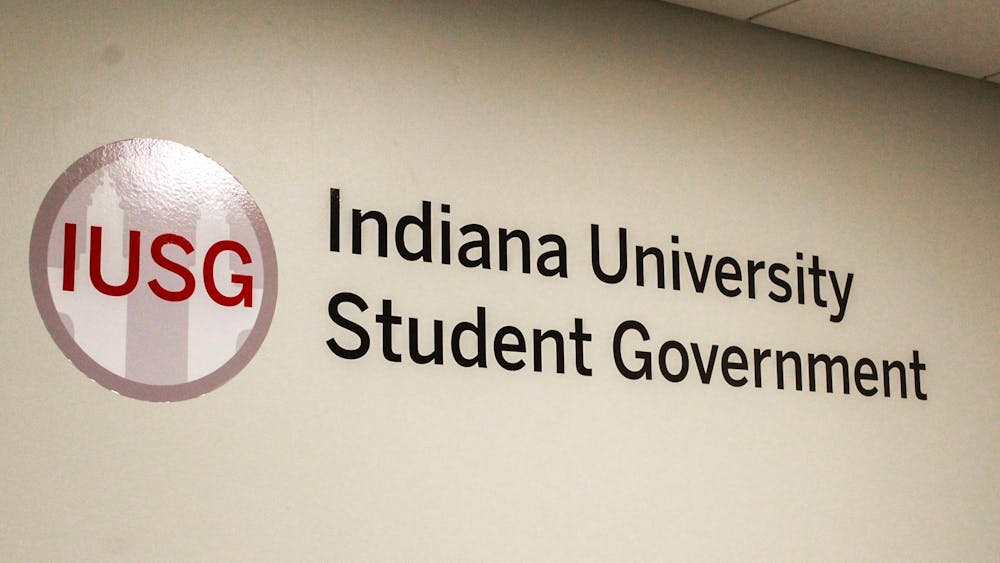The diamond-shaped holes in the square pieces of paper were too big for the small white candles. Once lit, their wax would drip through onto the hand of the holder. So 30 minutes before IU4Nepal, seven helpers sat folding the papers so they would fit more snugly around the wax while they waited for the Grand Hall in the Neal-Marshall Black Cultural Center to fill.
The vigil they were preparing wasn’t for an IU student, as with the few we have seen in the course of this school year. It was held instead in response to the death of thousands of people who were in Nepal on Saturday when a 7.8-magnitutde earthquake caused massive devastation in and around the country.
Prior to the vigil at Showalter Fountain, a public forum was held in the Grand Hall.Professor of Geological Sciences Michael Hamburgerwas the first to present. He led the audience through a PowerPoint with an abundance of technical information about the earthquake, along with some jolting statistics.
As of Thursday, 5,200 deaths. Hundreds missing. More than 11,000 injured and 450,000 displaced. More than 8 million affected.
Seismograms were flashed onto the screen, along with geographical images of the tectonics at fault for the disaster. Every year, plates in India move two inches closer to Eurasia, forming the vast Himalayan Mountains, Hamburger said.
Hamburger called it an “anticipated earthquake.” He said stress builds up between the two tectonic places, and the more time between two earthquakes, the more likely it is for one to be of high intensity.
“It’s part of the cycle of the locking of stress, and then the releasing of stress that has risen to the surface,” Hamburger said.
Next, Santosh Adhikari, a Ph.D. economics student,discussed the economic impact. The already-high unemployment rate will rise, he said. Reconstruction costs are estimated at $5 billion.
After hearing about scientific and economic consequences, the audience was given a personal account by Professor of English and Humanities Samrat Upadhyay about the shattering loss of culture suffered by Nepalis.
“The monuments, my heart breaks every day to see the monuments,” he said. “People would go there to pray on a daily basis.”
Each year, Upadhyay said, he brings a group of his MFA students on a trip to Nepal to view these “living monuments.” Some of them have now been destroyed, flattened to shards.
“The devastation is immense, it’s a big tragedy, and I think it’s going to take us a long time to heal,” Upadhyay said. “But we should also have messages of encouragement and hope.”
Dikshant Uprety spoke next about the need for international aid. He is a graduate student studying ethnomusicology and a former employee of a Nepali nongovernmental organization. Many Neplali doctors aren’t willing to go into the mountains to help, he said. It takes too long to become a doctor, and it’s too expensive. They stay in their big hospitals so they can continue to save money.
“So how do we deal with that?” he said. “How do we perceive a terror of that (scale) by nature?”
Everyone is sleeping outside, Uprety said, too fearful to enter another structure that could crash down on them and their children and grandchildren.
Following the forum, the sun was dipping behind surrounding buildings as forum attendees gathered around Showalter Fountain for the vigil.
Regret had compelled IU junior Shriya Velloorto attend the vigil, she said. She was in Mumbai during the 26/11 militant attacks on the city. She was in New Delhi at the time of the 2012 gang rape of Singh Pandey.
In both cases, she did not attend the vigil held. Her mother had prevented her for fear of danger in the case of rioting. This weighed heavy on her, and she hoped to feel better after attending the IU4Nepal vigil.
But she had another reason for attending.
“I’m really affected by the fact that so many people were killed,” she said.
Eventually, the crowd was gathered together with candles in their hands, listening to creative readings by MFA students who had traveled with Upadhyay to Nepal.
The candles wouldn’t stay lit, at first. The spray from the fountain and the cool wind extinguished them almost as soon as they were lit. But soon enough, a crowd of about 100 people stood with their lit candles, gently shielding them with one hand as they reflected on the death of thousands.






